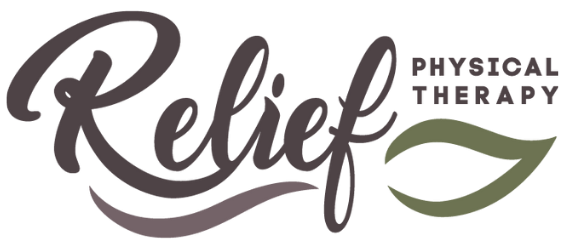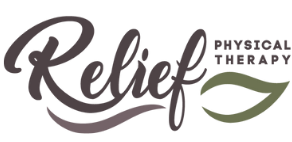
Men and Pelvic Floor Issues: Understanding Symptoms and Finding Relief
Men and Pelvic Floor Issues: Understanding Symptoms and Finding Relief
When it comes to pelvic floor issues, most people think of women, especially those who have experienced childbirth or menopause. However, men can also suffer from pelvic floor dysfunction, and it’s more common than you might think.
When it comes to pelvic floor issues, most people think of women, especially those who have experienced childbirth or menopause. However, men can also suffer from pelvic floor dysfunction, and it’s more common than you might think.

Understanding Pelvic Floor Dysfunction in Men:
Understanding Pelvic Floor Dysfunction in Men:
The pelvic floor is a group of muscles that support the pelvic organs, including the bladder, rectum, and, in men, the prostate. These muscles help control bowel and bladder functions and contribute to sexual health. When the pelvic floor muscles become weak, tight, or unbalanced, it can lead to unwanted symptoms and health issues.
It is common for men to experience pelvic floor symptoms for a long time before seeking help. If you or anyone you know is experiencing symptoms discussed here, please consider talking with a medical professional. Many of these problems can be addressed conservatively without surgery or procedures.
The pelvic floor is a group of muscles that support the pelvic organs, including the bladder, rectum, and, in men, the prostate. These muscles help control bowel and bladder functions and contribute to sexual health. When the pelvic floor muscles become weak, tight, or unbalanced, it can lead to unwanted symptoms and health issues.
It is common for men to experience pelvic floor symptoms for a long time before seeking help. If you or anyone you know is experiencing symptoms discussed here, please consider talking with a medical professional. Many of these problems can be addressed conservatively without surgery or procedures.
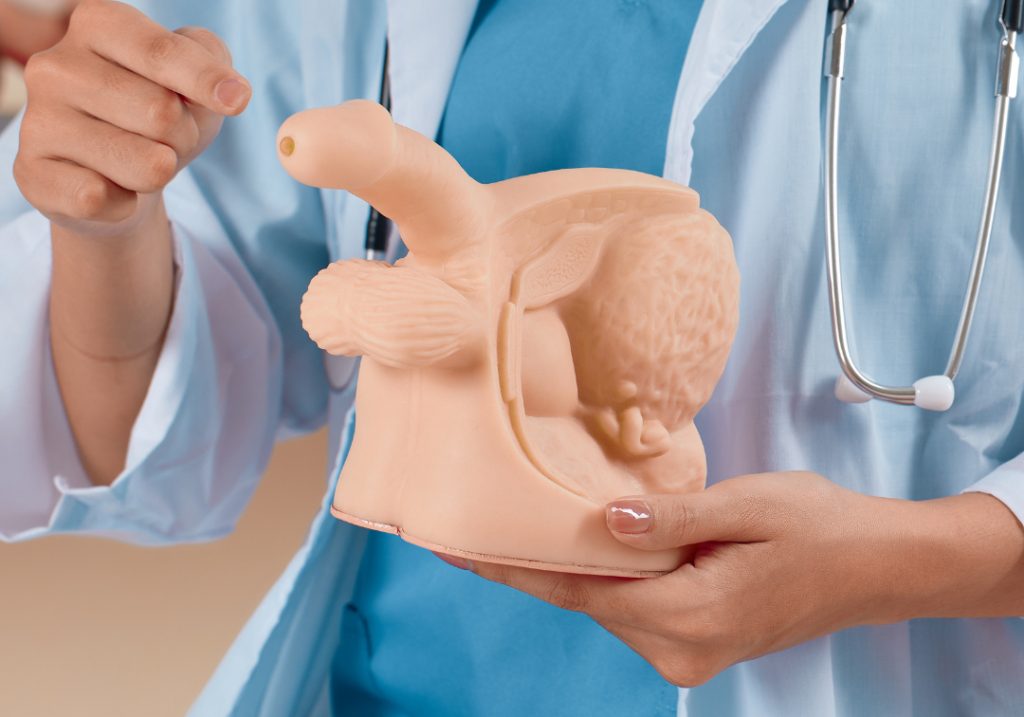
Symptoms of Pelvic Floor Dysfunction in Men:
Symptoms of Pelvic Floor Dysfunction in Men:
Men with pelvic floor issues might experience a range of symptoms, often affecting their daily lives. Some common symptoms include:
Urinary Problems:
· Frequent urination or urgency
· Difficulty starting or stopping urination
· A weak urine stream or the feeling of incomplete emptying
· Dribbling after urination
Bowel Issues:
· Constipation or straining during bowel movements
· Pain during or after bowel movements
· Incomplete bowel evacuation
· Anal Fissures or hemorrhoids
Pelvic Pain:
· Chronic pelvic pain or discomfort
· Pain in the lower back, hips, or genital area
· Pain during or after sexual activity
Sexual Dysfunction:
· Erectile dysfunction
· Pain during ejaculation
· Reduced sexual satisfaction
Other Symptoms:
· Testicular pain or discomfort
· A feeling of heaviness or pressure in the pelvic area
Men with pelvic floor issues might experience a range of symptoms, often affecting their daily lives. Some common symptoms include:
Urinary Problems:
· Frequent urination or urgency
· Difficulty starting or stopping urination
· A weak urine stream or the feeling of incomplete emptying
· Dribbling after urination
Bowel Issues:
· Constipation or straining during bowel movements
· Pain during or after bowel movements
· Incomplete bowel evacuation
· Anal Fissures or hemorrhoids
Pelvic Pain:
· Chronic pelvic pain or discomfort
· Pain in the lower back, hips, or genital area
· Pain during or after sexual activity
Sexual Dysfunction:
· Erectile dysfunction
· Pain during ejaculation
· Reduced sexual satisfaction
Other Symptoms:
· Testicular pain or discomfort
· A feeling of heaviness or pressure in the pelvic area
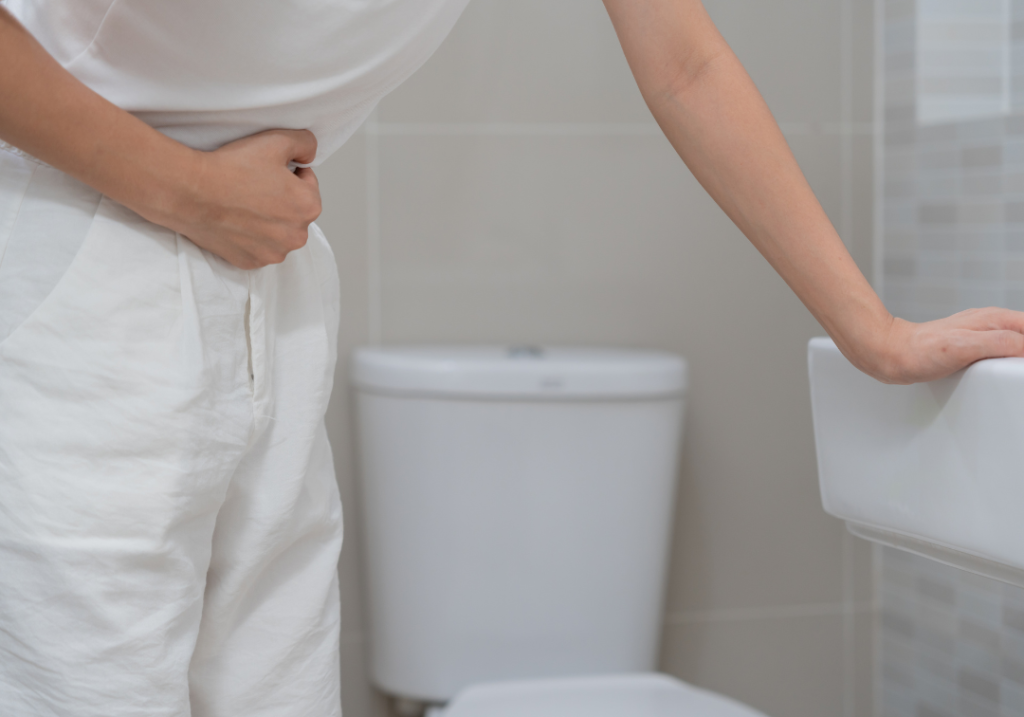
Pelvic floor therapy can significantly improve healing of anal fissures. It may not seem obvious, but your relief will be! Fissures heal faster when the tissue is more flexible. With good technique and muscle flexibility, passing stool doesn’t keep re-opening the wound. Learning techniques for passing stool and prevention of recurring fissures are key to being able to eliminate laxatives and maintaining healthy bowels.
Pelvic floor therapy can significantly improve healing of anal fissures. It may not seem obvious, but your relief will be! Fissures heal faster when the tissue is more flexible. With good technique and muscle flexibility, passing stool doesn’t keep re-opening the wound. Learning techniques for passing stool and prevention of recurring fissures are key to being able to eliminate laxatives and maintaining healthy bowels.

Causes of Pelvic Floor Dysfunction in Men:
Causes of Pelvic Floor Dysfunction in Men:

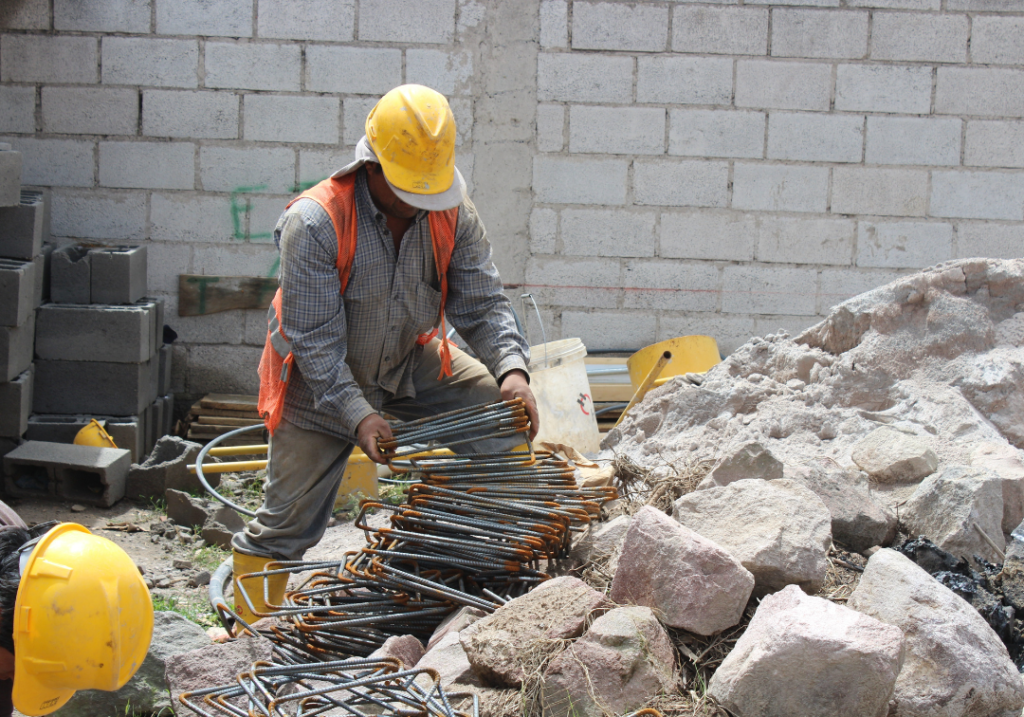
Several factors can contribute to pelvic floor dysfunction in men, including:
Chronic Straining: Straining during bowel movements, often due to constipation, can weaken the muscles in the bowels, the pelvic fascia, and pelvic floor muscles over time. Chronic straining also puts you at risk for hernias.
Prostate Issues: Conditions like prostatitis (inflammation of the prostate) or benign prostatic hyperplasia (BPH) can affect the pelvic floor.
Surgery: Pelvic surgeries, including prostate surgery, can impact pelvic floor muscle function. And compromise pressure management and urinary control.
Injury or Trauma: Injuries in the back, hips, abdomen, and thighs can change the way you move, and in turn affect the way the pelvic floor engages. Pelvic injuries from accidents or sports can lead to chronic pain from compensating and dysfunction at the pelvic floor.
Lifestyle Factors: Prolonged sitting, heavy lifting, and high-impact sports can cause strain of pelvic floor muscles. Restoring balance to weak, tight, and overworked muscles can be a game changer to managing urinary, bowel, or painful symptoms “down there.”
Stress: Physical response to stress can include holding muscles tightly. Some people hold their stress in their neck. Some in their back. Some in their pelvic floor.
Several factors can contribute to pelvic floor dysfunction in men, including:
Chronic Straining: Straining during bowel movements, often due to constipation, can weaken the muscles in the bowels, the pelvic fascia, and pelvic floor muscles over time. Chronic straining also puts you at risk for hernias.
Prostate Issues: Conditions like prostatitis (inflammation of the prostate) or benign prostatic hyperplasia (BPH) can affect the pelvic floor.
Surgery: Pelvic surgeries, including prostate surgery, can impact pelvic floor muscle function. And compromise pressure management and urinary control.
Injury or Trauma: Injuries in the back, hips, abdomen, and thighs can change the way you move, and in turn affect the way the pelvic floor engages. Pelvic injuries from accidents or sports can lead to chronic pain from compensating and dysfunction at the pelvic floor.
Lifestyle Factors: Prolonged sitting, heavy lifting, and high-impact sports can cause strain of pelvic floor muscles. Restoring balance to weak, tight, and overworked muscles can be a game changer to managing urinary, bowel, or painful symptoms “down there.”
Stress: Physical response to stress can include holding muscles tightly. Some people hold their stress in their neck. Some in their back. Some in their pelvic floor.
Practical Suggestions for Relief: (Tame that Talleywhacker!)
Practical Suggestions for Relief: (Tame that Talleywhacker!)
If you’re experiencing symptoms of pelvic floor dysfunction, there are several steps you can take to find relief and improve your pelvic health:
Stretching and Strengthening:
-Incorporate stretches that target the pelvic area, such as hip flexor stretches, and hip adductor stretches, to improve flexibility and reduce tension.
-Strengthen your core muscles. Ensuring that your core is well balance with a variety of trunk exercises, including your lower back and abdominal muscles will support pelvic floor health.
Posture and Ergonomics:
-Maintain good posture, especially when sitting, to reduce pressure on the tailbone and pelvic floor. For more information about tailbone pain check out- Tailbone Pain, Problems and Issues, Here.
-Use ergonomic seating options that provide adequate support and reduce strain on the pelvic area.
Pelvic Floor Exercises:
-Kegel Exercises: These exercises involve tightening and relaxing the pelvic floor muscles. To perform a Kegel, contract the muscles you would use to stop urination, hold for a few seconds, and then relax.
-Reverse Kegels: These exercises focus on relaxing the pelvic floor muscles, which can be beneficial if your muscles are too tight, or you have trouble managing pressure in your trunk. To perform a reverse Kegel, take a deep breath and gently push as if you’re trying to pass gas or urinate, then relax.
Diet and Hydration:
-Eat a high-fiber diet to promote regular bowel movements and prevent constipation.
– Stay hydrated by drinking plenty of water throughout the day.
Bladder and Bowel Habits:
–Avoid straining during bowel movements; take your time and use a footstool to elevate your feet and promote a more natural position.
-Practice timed voiding by urinating at regular intervals to avoid bladder overfilling and reduce urgency.
Stress Management:
-Incorporate stress-reduction techniques such as deep breathing, meditation, or yoga to relax your pelvic floor muscles and improve overall well-being.
If you’re experiencing symptoms of pelvic floor dysfunction, there are several steps you can take to find relief and improve your pelvic health:
Stretching and Strengthening:
-Incorporate stretches that target the pelvic area, such as hip flexor stretches, and hip adductor stretches, to improve flexibility and reduce tension.
-Strengthen your core muscles. Ensuring that your core is well balance with a variety of trunk exercises, including your lower back and abdominal muscles will support pelvic floor health.
Posture and Ergonomics:
-Maintain good posture, especially when sitting, to reduce pressure on the tailbone and pelvic floor. For more information about tailbone pain check out- Tailbone Pain, Problems and Issues, Here.
-Use ergonomic seating options that provide adequate support and reduce strain on the pelvic area.
Pelvic Floor Exercises:
-Kegel Exercises: These exercises involve tightening and relaxing the pelvic floor muscles. To perform a Kegel, contract the muscles you would use to stop urination, hold for a few seconds, and then relax.
-Reverse Kegels: These exercises focus on relaxing the pelvic floor muscles, which can be beneficial if your muscles are too tight, or you have trouble managing pressure in your trunk. To perform a reverse Kegel, take a deep breath and gently push as if you’re trying to pass gas or urinate, then relax.
Diet and Hydration:
-Eat a high-fiber diet to promote regular bowel movements and prevent constipation.
– Stay hydrated by drinking plenty of water throughout the day.
Bladder and Bowel Habits:
–Avoid straining during bowel movements; take your time and use a footstool to elevate your feet and promote a more natural position.
-Practice timed voiding by urinating at regular intervals to avoid bladder overfilling and reduce urgency.
Stress Management:
-Incorporate stress-reduction techniques such as deep breathing, meditation, or yoga to relax your pelvic floor muscles and improve overall well-being.
Remember- Stress management is a SKILL, not a TALENT. You can significantly improve your ability to manage your physical responses to stress with practice.
Remember- Stress management is a SKILL, not a TALENT. You can significantly improve your ability to manage your physical responses to stress with practice.
Professional Help
-Consult with a healthcare provider like a pelvic floor physical therapist who can offer personalized assessment and treatment options. They can provide targeted exercises, manual therapy, strategies, and other interventions to address your specific symptoms.
Professional Help
-Consult with a healthcare provider like a pelvic floor physical therapist who can offer personalized assessment and treatment options. They can provide targeted exercises, manual therapy, strategies, and other interventions to address your specific symptoms.



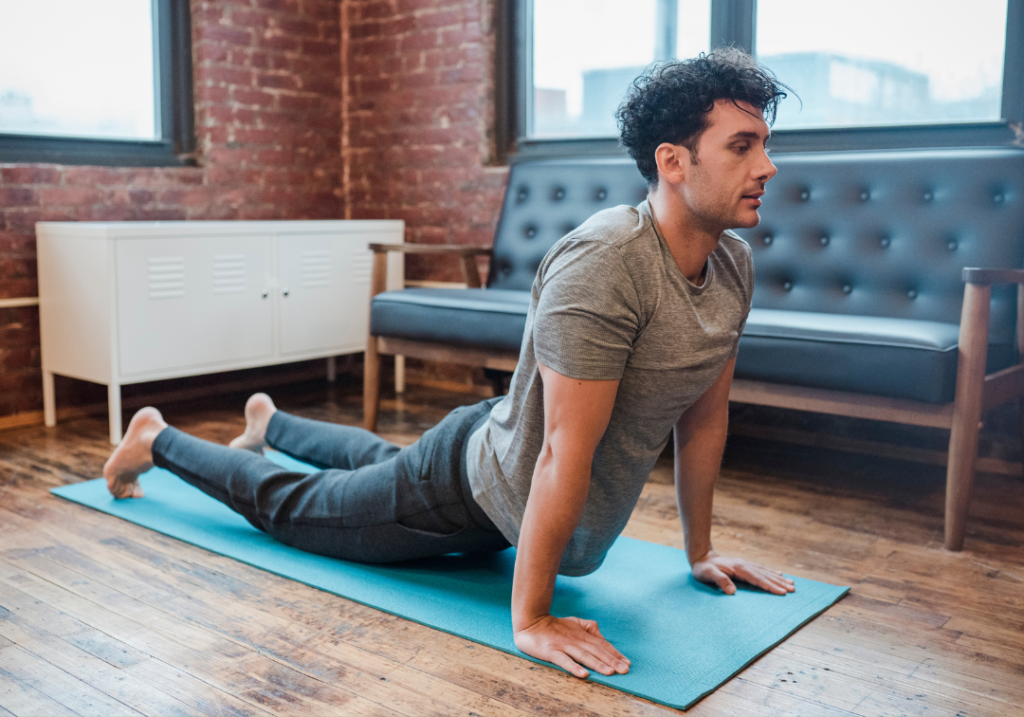
Pelvic floor issues in men are more common than often realized and can significantly impact quality of life. By recognizing the symptoms and taking proactive steps to manage and improve pelvic health, men can find relief from discomfort and enjoy better overall well-being. If you’re experiencing any of the symptoms mentioned, look for. Pelvic floor physical therapist in your area. With the right support and strategies, you can regain control and improve your pelvic floor health.
All Pelvic Floor Physical Therapists are not all the same- Even within this amazing specialty we all have different experiences and niches. If you are on the search for a pelvic floor therapist, download this worksheet to help you with questions to ask to find a good fit for your pelvic health needs. Download Here
Pelvic floor issues in men are more common than often realized and can significantly impact quality of life. By recognizing the symptoms and taking proactive steps to manage and improve pelvic health, men can find relief from discomfort and enjoy better overall well-being. If you’re experiencing any of the symptoms mentioned, look for. Pelvic floor physical therapist in your area. With the right support and strategies, you can regain control and improve your pelvic floor health.
All Pelvic Floor Physical Therapists are not all the same- Even within this amazing specialty we all have different experiences and niches. If you are on the search for a pelvic floor therapist, download this worksheet to help you with questions to ask to find a good fit for your pelvic health needs. Download Here

Holly McDonald, PT
Pelvic Rehab Specialist
HoHolly McDonald, PT
Pelvic Rehab Specialist
My practice is in Winston Salem NC. I see some patients virtually, but in-person is even better.
I am located at 501 Shepherd St. Winston Salem NC 27103. For more information, or to schedule an appointment please call the office at 336-414-2050, or email us at office@reliefpt.com.
My practice is in Winston Salem NC. I see some patients virtually, but in-person is even better.
I am located at 501 Shepherd St. Winston Salem NC 27103. For more information, or to schedule an appointment please call the office at 336-414-2050, or email us at office@reliefpt.com.
